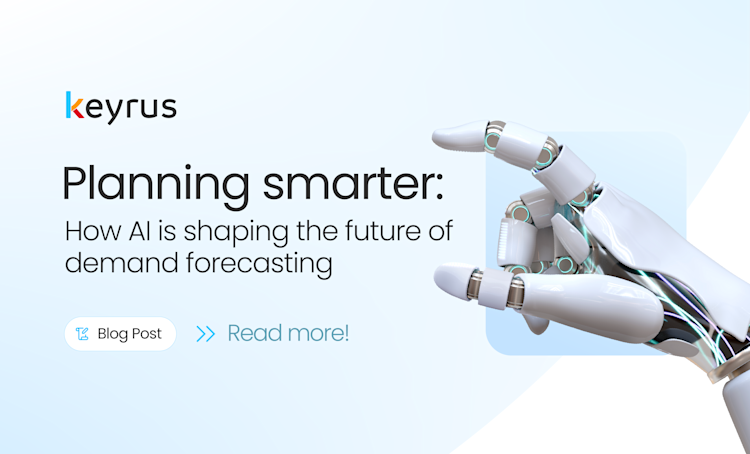As artificial intelligence continues to reshape industries, demand planning stands out as one of the areas where its impact is both immediate and long-term. The promise of AI, faster forecasts, better scenario planning, real-time responsiveness, is appealing. But how far along are organizations in realizing that potential? And more importantly, what’s getting in the way?
At Keyrus, we’ve spent over a decade advising and implementing connected planning solutions across sectors, from consumer goods and life sciences to mining and technology. We work closely with teams trying to bridge the gap between the excitement around AI and the day-to-day realities of forecasting demand in volatile, data-rich environments. What we’re seeing is a shift, not just in tools, but in mindset.
Speed is No Longer a Competitive Advantage. It’s a Requirement.
Supply chains today operate in an environment of constant disruption. Whether it’s a new tariff, a supply shock, or a rapidly evolving consumer preference, planning teams can no longer rely on rigid, calendar-based processes. Forecasting models that take a week to update are already outdated by the time decisions need to be made.
The organizations adapting most successfully are moving beyond traditional methods. They're embracing AI-enabled planning platforms not because it’s trendy, but because it allows them to respond faster, with greater confidence. They're running scenarios in hours, not days. They’re using machine learning to detect demand shifts earlier, and combining internal and external signals to make decisions that are both data-driven and forward-looking.
But Technology Alone Doesn’t Solve Planning Challenges
Despite the proliferation of AI tools, many businesses are still early in their journey. Why? In our experience, the biggest barriers aren’t technical. They’re strategic.
We often hear clients say, “We want to do AI in demand planning.” But when we ask what business problem they’re trying to solve, the conversation often reveals a lack of clarity. Is it forecast accuracy? Responsiveness? Visibility across planning horizons?
Without a clear objective and a solid data foundation, AI risks becoming another black box; delivering outputs without context or trust. That’s why our approach at Keyrus begins with aligning AI adoption to specific planning goals. We focus on explainability and transparency. With tools like Predikt.ai, we help companies make sense of predictive outputs and bring statistical intelligence into the heart of their planning conversations.
Data Still Makes or Breaks the Model
AI depends on data, but not just more of it. It depends on the right data, organized in the right way. Many teams still rely on Excel as a workaround to bridge disconnected systems. In these cases, demand planners spend more time preparing data than using it to make decisions.
What’s needed is not just better data tools, but better data ownership. We believe organizations should treat supply chain data as a strategic asset. That means governance, clear responsibilities, and ongoing investment in data quality. In some cases, that even means introducing dedicated roles; like a head of supply chain data strategy, alongside traditional planning functions.
From Reactive to Proactive Planning
The most forward-looking organisations are no longer just forecasting demand, they’re shaping it. By integrating external signals, deploying automated pattern recognition, and connecting planning processes across functions, they’re becoming more agile, more customer-centric, and more resilient.
These outcomes don’t happen by chasing AI trends alone. They happen when business process, data strategy, and the right technology platform, such as Anaplan’s connected planning ecosystem, are aligned around shared priorities.
At Keyrus, we help clients move beyond experimentation to execution. We focus on what works: connected planning, powered by data, and enhanced, where it adds real value, by AI.
Watch the Full Discussion On Demand
We recently joined a webinar hosted by Supply Chain Management Review, together with Anaplan on how AI is redefining the role of demand planning, from reactive forecasting to strategic, cross-functional decision-making.
